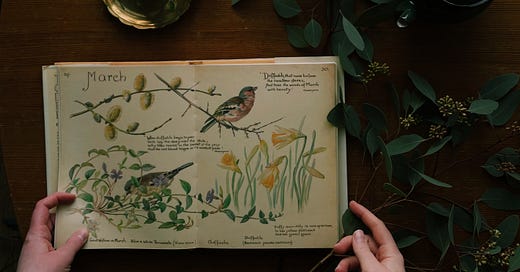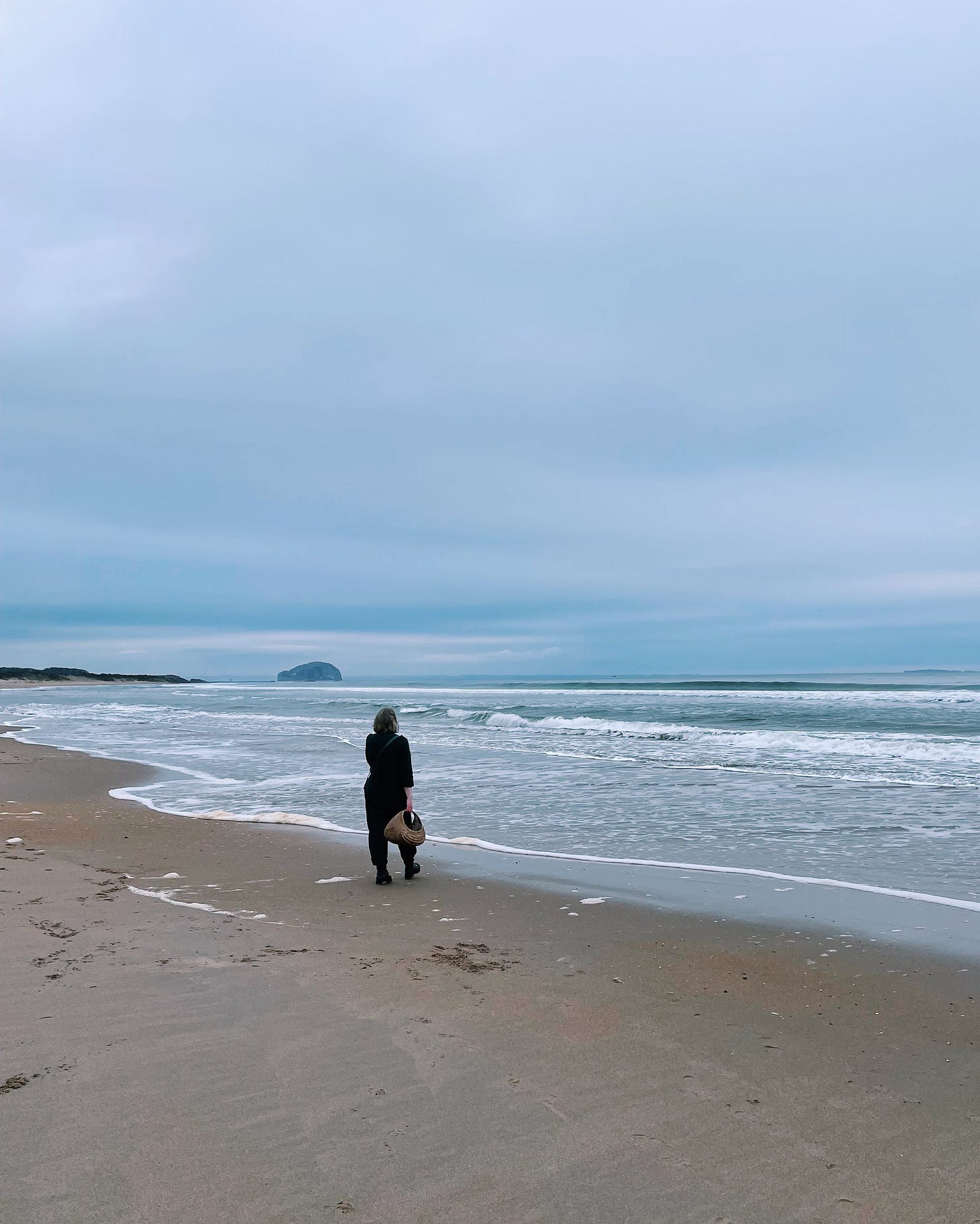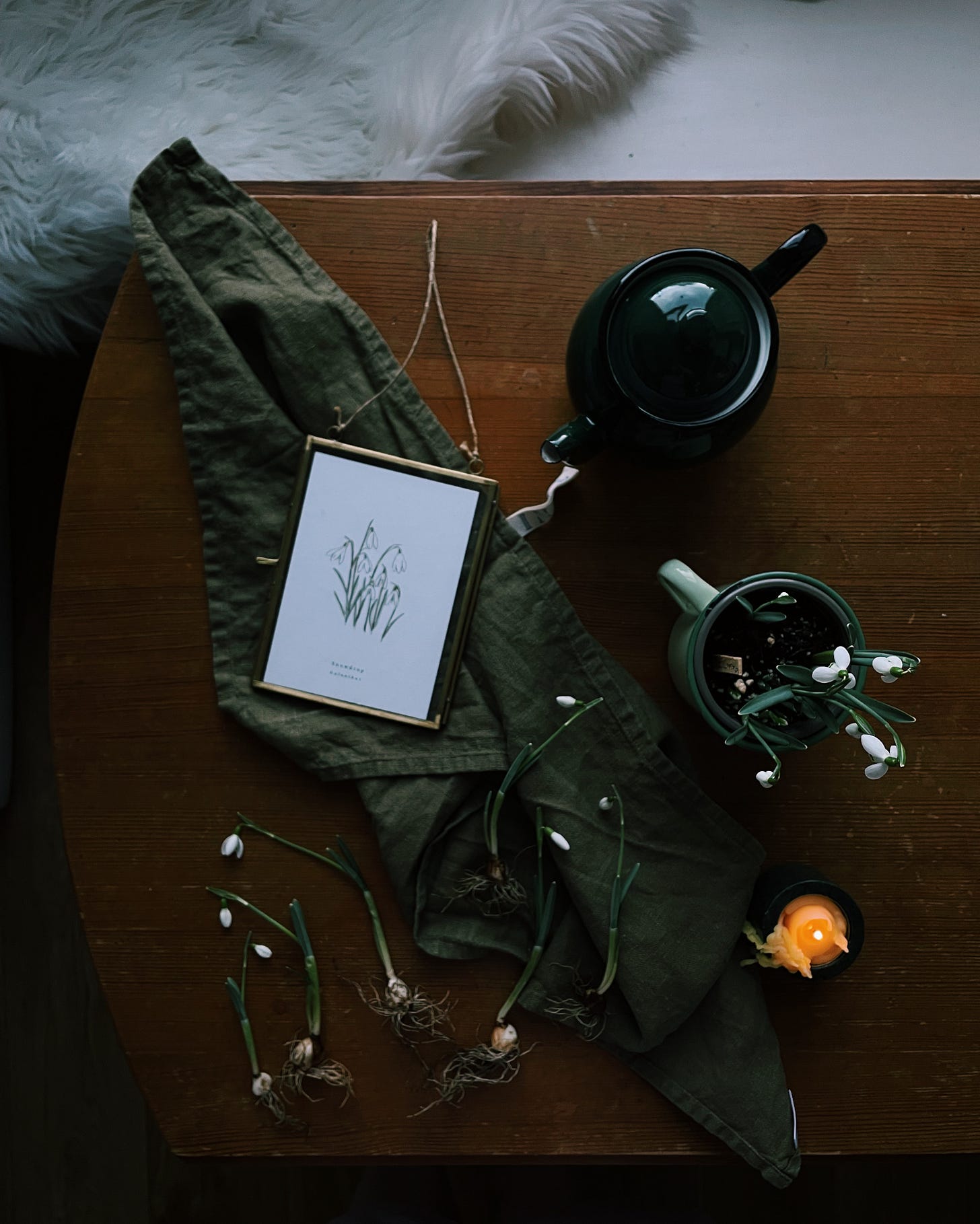In recent days and weeks I’ve been turning to nature more than ever, seeking moments of peace and small signs of hope. At this time of year, there’s always something new to observe and ground us in the moment - whether it’s the days lengthening that little bit more and it being light at six o’clock, or the first daffodils opening, their sunny faces offering colour and cheer even in these dark days. Here are my nature notes to notice for these weeks leading up to Ostara, the Vernal Equinox on 20th March here in the Northern Hemisphere.
Land
As the Earth begins to warm, many animals begin to come out of hibernation and become more active. At this time of year you might be lucky enough to spot rabbits and voles above ground, searching for food in fields. The leafless trees make it easy to spot woodland wildlife at this time too - keep your eyes peeled for roe deer.
Insects, including butterflies, can be spotted on milder days. If you have a garden, it’s worth leaving a corner wild with nettles, brambles or similar to provide food for the emerging insects. The blackthorn is the first hedgerow bloom to flower with its distinctive white petals: make note of its location for sloe foraging in the Autumn.
The yellow flowers of primroses appear from the end of February in woodlands and hedgebanks, adding much longed for colour. I even spotted some in the middle of the city on a roadside verge - they made me smile. Soon they are followed by wild garlic (ramsons), which you will smell long before you see. The scent of Spring in a nutshell. They are best foraged young, before their white flowers appear in April. In ancient woodlands, bluebell leaves begin to push through the soil in February and by the end of March will be beginning to unfurl in milder areas.
Water
Many freshwater invertebrates are emerging – peep under rocks in streams and ponds (just make sure to put them back). On warmer days, you are also likely to see lots of frogs at this time of year as it is amphibian breeding season. On lakes, the ubiquitous grebes can be spotted courting with a spectacular, balletic display. Pikes breed at this time of year and put on quite a display, males thrashing around and chasing the larger females.
Sky
Have you noticed the morning birdsong just now? It even woke me up yesterday! Some birds are beginning to breed too: rooks in the woods and gannets at the coast. Skylarks can be seen (and certainly heard) on coastal marshes; it’s no wonder so many artists have been inspired by their song. “Up with me! Up with me into the clouds! For thy song, lark, is strong,” said Wordsworth. Larks use their song to compete for mates, and those with the broadest repertoire are usually most successful at wooing.
Millions of migratory birds begin to arrive in the UK during this time of year, including swallows, warblers, house martins, wagtails, turtle doves and ospreys. Try to spot them with a pair of binoculars and use a guide book (I use my trusty vintage Observer Book of Birds) to identify them. Wear dark colours and find a secluded spot from which to sketch them.
At this time of year you can often hear the distinctive tapping of the cuckoo in woodlands, while grey herons can be spotted building nests in colonies – you’re likely to see them before you hear them too with their noisy, clattering beaks.
I hope you can spot some of these nature notes in the lead-up to Ostara. If you enjoy my newsletters I’d love it if you could share them and encourage other like-minded folks to follow! I have exciting plans, but they very much depend on building an audience here and on my Instagram so every like, share and follow helps. Sorry to be cryptic for now… I’m also planning a 500 newsletter followers giveaway to say thank you to this lovely community - watch out for Saturday’s newsletter for more on that!







Spring is in the air (and the light)!
So much to see and hear now, wonderful. 💕💕💕